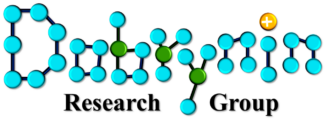Heyi Liang, Sergei S. Sheiko, and Andrey V. Dobrynin
Using a combination of the scaling analysis and molecular dynamics simulations, we study relationship between mechanical properties of networks of graft polymers and their molecular architecture. The elastic response of such networks can be described by replacing the brushlike strands with wormlike strands characterized by the effective Kuhn length which is controlled by the degree of polymerization of the side chains nsc and their grafting density 1/ng. In the framework of this approach we have established relationships between the network structural shear modulus G, strands extension ratio β, and architectural triplet [nsc, ng, nx], where nx is the degree of polymerization of the backbone strand between cross-links. Analysis of the simulation data shows that G could increase with β (G ∝ β), which reflects the “golden rule” of elastomers: softer materials are more deformable. However, networks of graft polymers can also break this rule and demonstrate an increase of the modulus G with decreasing extension ratio β such as G ∝ β–2. This can be achieved by changing the grafting density of the side chains 1/ng and keeping nx and nsc constant. This peculiar mechanical response of graft polymer networks is in agreement with experimental studies of poly(dimethylsiloxane) graft polymer elastomers.

